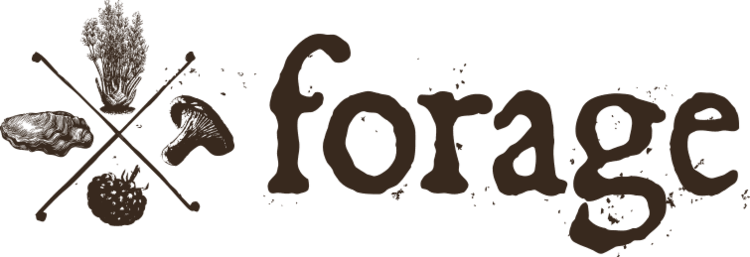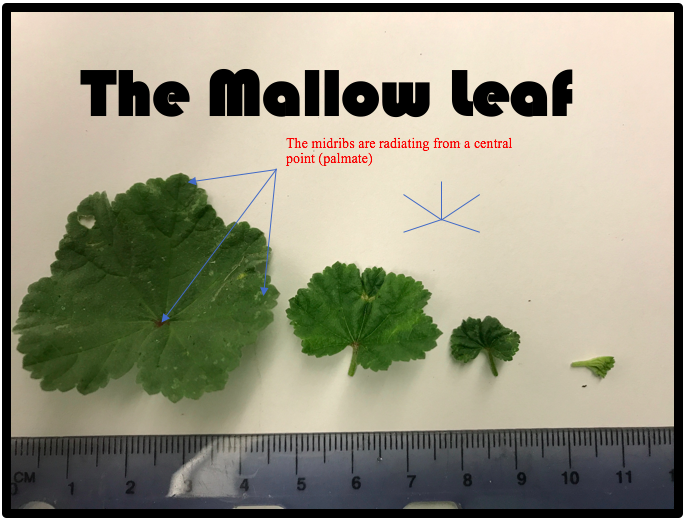Mallow: You've gotta try any plant that has a "cheese wheel"
Today’s guest post is from Kevin Feinstein (one of the leaders of our wild food walks), and Mia Adler’s book The Bay Area Forager: Your Guide to Edible Wild Plants of the San Francisco Bay Area. Check at the bottom of the post for a purchase link to their great guide to all things wild and edible!
Common Mallow, Malva (Malva neglecta)
Family: Malvaceae (okra, hisbiscus, kenaf, marsh mallow)
Eurasian Weed
Many readers might have actually eaten this plant before and didn’t know it. The young leaves are often found in good salad mixes that you get at the farmer’s market and even sometimes in stores like Whole Foods, albeit in small (perhaps accidental) amounts. This plant is also called malva, and it is in the Malvaceae family. Okra is also in this family. I ask people in my walks, “what is the first thing you think of when you think of okra?” and 99% of the time I get the response, “slimy,” which is what I’m fishing for, of course. Mallow is also slimy, or mucilagenous (see below). It is also in the same family as hibiscus (indeed, mallow flowers look like tiny, weedy, pinkish-purple hibiscus flowers). Mallow is closely related to another plant, the marsh mallow -- yes, the same plant that marshmallows used to be made from (now they are just chemicals and sugar). It is also related to kenaf, a plant used commercially and traditionally to make fibers and fabrics.
What does it look like? Herbaceous perennial, whose mature stalks once gone to seed, typically die back to the ground. It’s a tough and common weed with a very deep and penetrating taproot, as gardeners will attest to. The leaves are a bit course and crinkly, with a geranium-like look. They have no real scent when crushed. The texture is somewhat unique. The flowers are small and purple-pink, resembling tiny hibiscus flowers or okra flowers as noted above. The plant then forms seedpods, that resemble little cheesewheels (especially when green.) Many of the kids I teach have called this plant the cheesewheel plant as the immature seedpods, or cheesewheels, are perhaps the most tasty and interesting part of the mallow plant.
When is it available? Depending on the microclimate, edible parts of the plant can be available all year. In warmer, drier climates (think away from the coast), the leaves are good in fall, winter, and early spring (the rainy season.) The immature pods or cheesewheels, typically April-June. In cooler, moister microclimates (think near the coast), leaves might be available all year, especially if grazed or weedwacked, and the mallow “cheesewheels” May-September.
Where can I find it? Disturbed areas: gardens, fields, parks, grassy hills, forest edges (but usually near people). It is a garden and agricultural weed. Very common in the Bay Area, you’ll even see it on trails as it regrows from disturbances such as weed whacking or trampling. Although I don’t recommend eating trampled mallow! I usually don’t see it in more remote wilderness areas.
How to use/forage: Young and medium age leaves are fine to eat in a salad, although they have an interesting texture and not much flavor by themselves. Old leaves aren’t recommended (because of texture and flavor). You can cook mallow leaves as a potherb as well. What I recommend is drying the leaves, crumbling them into a powder, and adding this to soups or smoothies, or gumbo-like dishes. They will thicken the dish, as they are mucilaginous. The immature seedpods (cheesewheels) are great snacks raw and delicious like okra if sauteed.
Sustainability: Considered to be an invasive or noxious weed by many, a very tough and abundant plant. So I say, go for it. If you want/need more, let some go to seed, and cut and come again with the leaves. Mallow is a plant that in some places, such as small farms and gardens, is discarded as a weed. By eating it rather than it going in the compost, I feel that it is a way of honoring the plant. If you want to eat this plant and don’t have access to safe local mallow foraging, ask your organic farmers at the market; they’ll know it and might be willing to provide it.
Bonus Box: Here’s the scoop I give my wild food walkers: The leaves don’t taste like much of anything. You can detect a bit of sliminess; it’s not bad, but it’s not really good either. I don’t particularly enjoy just grazing on mallow leaves. But mix a few in a salad with other succulent greens (such as miner’s lettuce or chickweed) with a good dressing, sure. I could even go as far as 1/4 of my salad greens being mallow, maybe. So why bother with the leaves? Mainly because they are super nutritious! Loads of plant-based precursors to vitamin A, minerals, and other phytonutrients. Containing this mucilage, the slimy part, it’s a great anti-inflammatory and has many soothing medicinal properties. Another use of the slimy property, one a chef might argue as being the main reason for eating mallow leaves: they help thicken dishes.
Bonus Box 2: What Kevin does with mallow. My favorite thing to do with mallow is cut off a whole plant (it’ll most likely grow back with healthier growth) or pluck one from your garden. Remember this is a common garden weed. I then dry the whole plant (it dries really amazingly well). This the lazy forager’s way: Get the whole plant and lay it on the counter at home, then in a few days it’s dry. I’ll then hold the plant over a large bowl or paper grocery bag and with a few quick strokes I’ll partially crush (they are surprisingly brittle) as I strip the leaves off the stalk, removing any yellow, brown or bad looking leaves first. I then put this into a coffee grinder, and I have a very nutritious green powder that I can use to thicken soups and gumbo-like dishes.
Bonus Box 3: WARNING: Mallow often inhabits wasteground and can accumulate poisons from polluted soils and waters. This goes for many of the plants in this book, but much of the mallow I see is essentially inedible because of the sidewalk or parking lot where it accumulates poisons or biological contaminants. The research suggests that mallow should not be eaten if it has received inorganic fertilizers or runoff. Don’t be discouraged, though, there’s lots of good clean mallow to go around!
Purchase The Bay Area Forager: Your Guide to Edible Wild Plants of the San Francisco Bay Area here.



